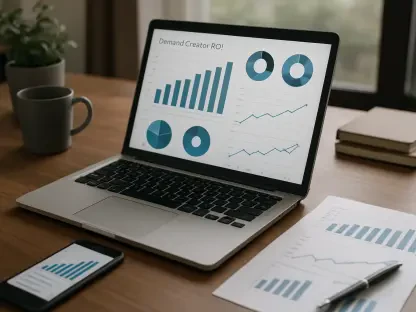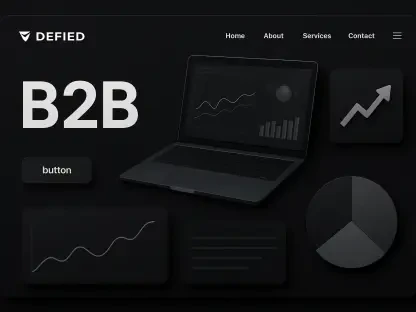Conversion Rate Optimization (CRO) is a dynamic digital marketing strategy meticulously designed to enhance various elements of a website, such as content, design, user experience, and call-to-action (CTA) placement. These enhancements are carried out with the primary objective of increasing the likelihood that visitors will take desired actions. Serving as a comprehensive approach, CRO ensures that SEO-generated visitors can efficiently transition through the sales funnel, ultimately leading to higher conversions. This exploration delves into how CRO functions, its numerous benefits, potential downsides, strategies for effective implementation, essential tools, and key takeaways for best practices.
Understanding Conversion Rates
How to Calculate Conversion Rates
Calculating conversion rates is essential for understanding the effectiveness of your CRO strategies and determining the overall efficiency of your website. This calculation can be conducted for an entire website or specific pages, allowing for a detailed analysis of various segments and individual elements. The formula employed is straightforward: the number of conversions divided by the total number of visitors, expressed as a percentage. For instance, if 1,000 unique site visitors result in 75 downloads of a lead magnet over the course of a week, the conversion rate is determined by dividing 75 by 1,000, yielding a ratio of 0.075. To convert this to a percentage, multiply by 100, resulting in a 7.5% conversion rate. Expressing conversion rates as percentages is beneficial for comparing and benchmarking your results against industry standards.
What Is a Good Conversion Rate?
Determining whether a conversion rate is considered good can be a challenging endeavor as it varies significantly across industries and specific actions being measured. To establish a benchmark, it’s best to compare your conversion rates with industry standards. For instance, a conversion rate of around 5% is generally deemed effective. According to Mailchimp, a conversion rate between 2% and 5% is considered good. In contrast, Leadpages considers an optimal conversion rate to be between 5% and 15%. However, these benchmarks can vary based on the industry. For example, the average conversion rate in the B2B eCommerce sector is approximately 1.8%, whereas, in the legal services sector, conversion rates can peak at around 7%. For email signups, a conversion rate of 2% or higher is regarded as healthy according to Klipfolio. Understanding these benchmarks is crucial for setting realistic targets and measuring the success of your CRO efforts.
Benefits of Conversion Rate Optimization
Lower Cost Per Acquisition (CPA)
Optimized conversion rates play a pivotal role in eliminating the necessity for extensive marketing strategies and channels, thereby making your overall marketing efforts more cost-effective. By focusing on improving the efficiency of your existing traffic, you can significantly reduce the need for additional marketing expenditures. This reduction in marketing expenses directly contributes to lower cost per acquisition (CPA), enabling you to allocate resources more strategically. By optimizing the conversion process, businesses can achieve higher returns without proportionally increasing their marketing budgets, resulting in a more sustainable and financially prudent approach to digital marketing.
Maximizing Existing Traffic
With Conversion Rate Optimization, the existing site traffic is better utilized, minimizing the necessity for additional visitor acquisition through supplementary SEO efforts. This means you can achieve more with the same amount of traffic, thereby enhancing the return on investment from your marketing endeavors. By focusing on converting a higher percentage of current visitors, businesses can save time and resources that would otherwise be spent attracting new visitors. An effective CRO strategy ensures that your marketing efforts yield maximum results, making each visitor interaction more valuable and impactful in driving conversions and achieving business objectives.
Tailoring Online Presence
Conversion Rate Optimization aids significantly in understanding visitors’ preferences and refining various website elements to better meet those needs. By paying attention to user behavior and feedback, businesses can make necessary adjustments to address concerns and solve pain points that may be hindering conversions. Tailoring your online presence to align with visitor expectations creates a more engaging and effective user experience. This personalized approach not only enhances user satisfaction but also increases the likelihood of conversions by making the website more intuitive and relevant to the target audience.
Increased Revenue and Competitiveness
Higher conversion rates directly contribute to increased sales and, consequently, better revenue for businesses. By optimizing content and design elements to improve conversions, companies can gain a competitive edge over competitors with non-optimized pages. This advantage allows businesses to stand out in a crowded market and attract more customers, driving growth and profitability. Effective CRO strategies ensure that visitors are more likely to engage with your website and make purchases, ultimately leading to a stronger position in the market and sustained financial success.
Discovering New Opportunities
Evaluating conversion processes through CRO can uncover hidden bottlenecks and underutilized funnels, opening new avenues for optimization and improved performance. This continuous improvement process enables businesses to identify areas where they can make impactful changes that enhance the overall user experience and conversion rates. By consistently analyzing and refining conversion strategies, companies can discover new opportunities for growth and expansion that they may not have previously considered. This proactive approach to optimization fosters innovation and ensures that businesses remain agile and responsive to changing market dynamics and customer preferences.
Downsides of Conversion Rate Optimization
Over-optimization
Over-optimization is a potential pitfall where tweaking too many small details can lead to diminishing returns. In this scenario, resources might be spent on minute changes that do not yield significant improvements in conversion rates. Striking the right balance between making necessary adjustments and avoiding over-optimization is crucial. Businesses must prioritize changes that have a tangible impact on user experience and conversions to ensure that their efforts and resources are used effectively. Over-optimization can lead to wasted effort and may even negatively affect the user experience if changes become too frequent or invasive.
Risk of User Alienation
While focusing on a particular target group during CRO efforts can be beneficial, it poses the risk of unintentionally excluding other potential customers. For example, simplifying content to cater to novice users might deter more knowledgeable visitors seeking detailed information. It’s essential to consider the diverse needs of all user segments when optimizing your site to avoid alienating any portion of your audience. Balancing the presentation of information to cater to different levels of expertise ensures that your website remains accessible and engaging to a broader range of visitors, ultimately contributing to higher overall conversion rates.
Data Dependence
CRO heavily relies on accurate data for informed decision-making. While this data-centric approach is essential for effective CRO strategies, it can limit creativity and innovation. Businesses may find themselves overly dependent on quantitative metrics, potentially overlooking qualitative insights that could lead to unique and compelling user experiences. It’s important to balance data-driven decisions with creative solutions to ensure a well-rounded optimization strategy. By integrating both analytical and creative approaches, companies can develop more comprehensive and effective strategies that resonate with their target audience and drive conversions.
Tried and Tested CRO Strategies
A/B Testing and Heat Maps
A/B testing is a fundamental CRO strategy involving the comparison of two versions of a webpage to determine which performs better. This method allows businesses to experiment with different layouts, headlines, content variations, and CTAs to identify the most effective elements. By systematically testing these variations, companies can make data-driven decisions on which changes to implement for optimal results. Heat maps provide valuable visual insights into user behavior on pages, allowing businesses to identify areas of improvement more effectively than data alone. Heat maps highlight where users click, scroll, and focus their attention, offering a clear understanding of how visitors interact with the website. Together, A/B testing and heat maps form a powerful combination for identifying optimization opportunities and implementing changes that drive conversions.
Improve Site Performance
Website performance plays a critical role in shaping user experience and influencing conversion rates. Slow load times can lead to higher abandonment rates as users become frustrated with delays and leave the site. To combat this, businesses can utilize tools such as PageSpeed Insights to analyze and improve loading times. Ensuring that web pages are user-friendly, mobile-optimized, and free of bugs is essential for maintaining a positive user experience. By prioritizing site performance, companies can reduce bounce rates, increase user engagement, and ultimately drive higher conversion rates. Regularly monitoring and optimizing site performance ensures that visitors have a seamless and efficient experience, making them more likely to take the desired actions.
Understand Your Target Audience
Understanding your target audience is crucial for creating a website that meets their needs and drives conversions. Employing session recordings and heat maps to gather data on user interactions provides valuable insights into how visitors navigate the site and where they encounter obstacles. This data-driven approach helps identify areas needing adjustments to enhance the user experience. Additionally, using surveys and feedback forms can provide direct insights into visitor preferences and pain points. By actively engaging with your audience and incorporating their feedback into your optimization efforts, you can create a more personalized and effective website. This understanding fosters a stronger connection with visitors, increasing the likelihood of conversions and customer satisfaction.
Keep Forms Simple
Reducing the number of fields in forms is a proven strategy to minimize user friction and increase completion rates. Complex or lengthy forms can deter users from completing them, resulting in lost conversion opportunities. Simplifying forms by including only essential fields makes the process more user-friendly and encourages more visitors to complete them. Multi-step forms can also guide users through the process without overwhelming them, breaking the information into manageable chunks. By making the form submission process straightforward and hassle-free, businesses can enhance user experience and drive higher conversion rates. Ensuring that forms are intuitive and easy to navigate is key to maximizing the number of users who complete the desired actions.
CRO Tools to Succeed
Plerdy
Plerdy is a comprehensive suite offering a range of features, including A/B testing, SEO, and CRO functionalities. This tool captures real-time user interactions, providing valuable insights into usability issues and areas for improvement. Additionally, Plerdy offers pop-up forms and tracks eCommerce interactions, making it a versatile solution for various optimization needs. Pricing for Plerdy ranges from free to $253 per month, catering to different budgets and requirements. By leveraging Plerdy’s capabilities, businesses can effectively identify and address optimization opportunities, enhancing user experience and driving higher conversions.
Landing Page Builder
A Landing Page Builder enables the bulk creation of landing pages with a user-friendly drag-and-drop interface. With over 400 templates available, businesses can easily design and customize landing pages to suit their needs. The tool also includes A/B testing features, allowing for continuous optimization based on performance data. Pricing for a Landing Page Builder starts at $49 per month, making it an accessible option for businesses looking to enhance their landing pages. Utilizing a Landing Page Builder ensures that landing pages are visually appealing, functional, and optimized for conversions, ultimately contributing to higher conversion rates and business success.
HelloBar
HelloBar is a platform designed for creating effective pop-ups, banners, and page takeovers. Known for its reliability and ease of use, HelloBar helps businesses capture visitor attention and drive conversions. The tool offers customizable options to suit different website styles and goals, with pricing ranging from free to $99 per month. By implementing pop-ups and banners strategically, businesses can highlight key offers, encourage sign-ups, and guide visitors toward desired actions. HelloBar’s user-friendly interface and proven effectiveness make it a valuable addition to any CRO toolkit, helping to increase engagement and conversion rates.
Conversion Rate Optimization Takeaways
Conversion Rate Optimization (CRO) is an evolving digital marketing technique aimed at improving various aspects of a website, such as content, design, user experience, and call-to-action (CTA) positioning. The primary aim is to increase the probability that visitors will complete the desired actions. CRO serves as an all-encompassing method ensuring that visitors driven by SEO can smoothly move through the sales funnel, resulting in increased conversions. This detailed analysis explores how CRO operates, its numerous advantages, possible drawbacks, strategies for effective implementation, critical tools, and key takeaways for best practices.
The benefits of CRO include higher conversion rates, improved user experience, and better ROI from your marketing efforts. However, some downsides could include the need for continuous testing and optimization, which can be resource-intensive. To implement CRO effectively, it’s essential to understand your audience, run A/B tests, and gather quantitative data to inform decisions. Essential tools for CRO include Google Analytics, heatmaps, and user feedback tools.
In summary, CRO is vital for any business looking to maximize the effectiveness of its online presence. By focusing on improving key website elements and understanding user behavior, businesses can significantly boost their conversion rates and overall success.









